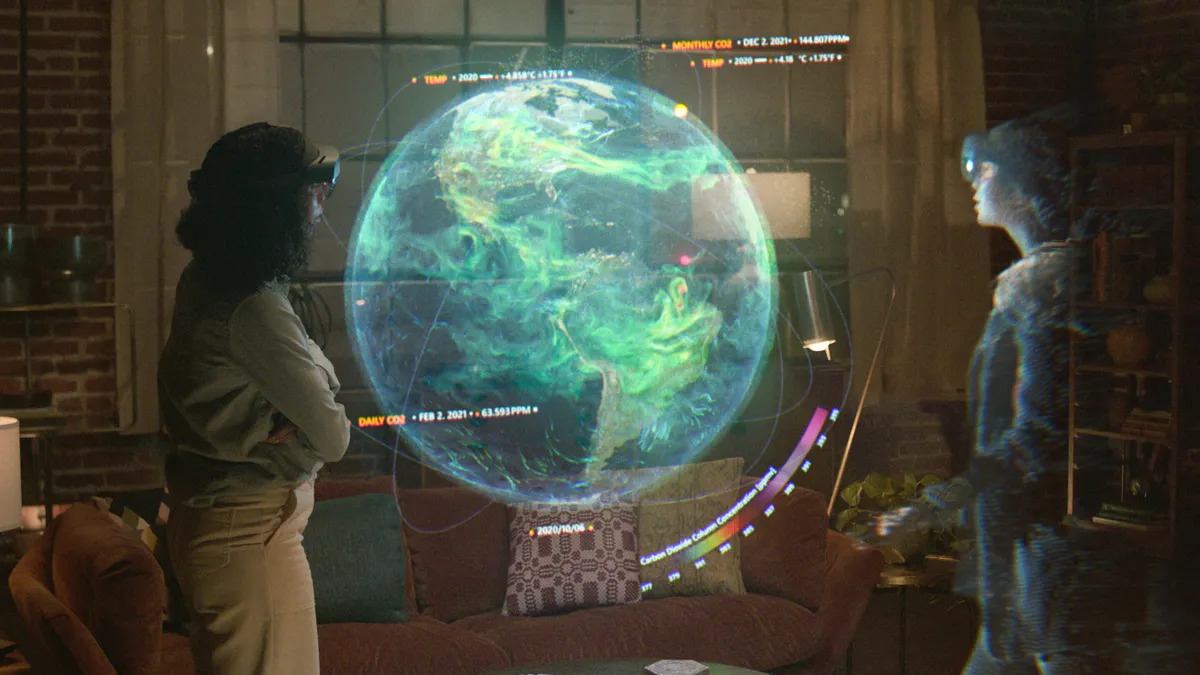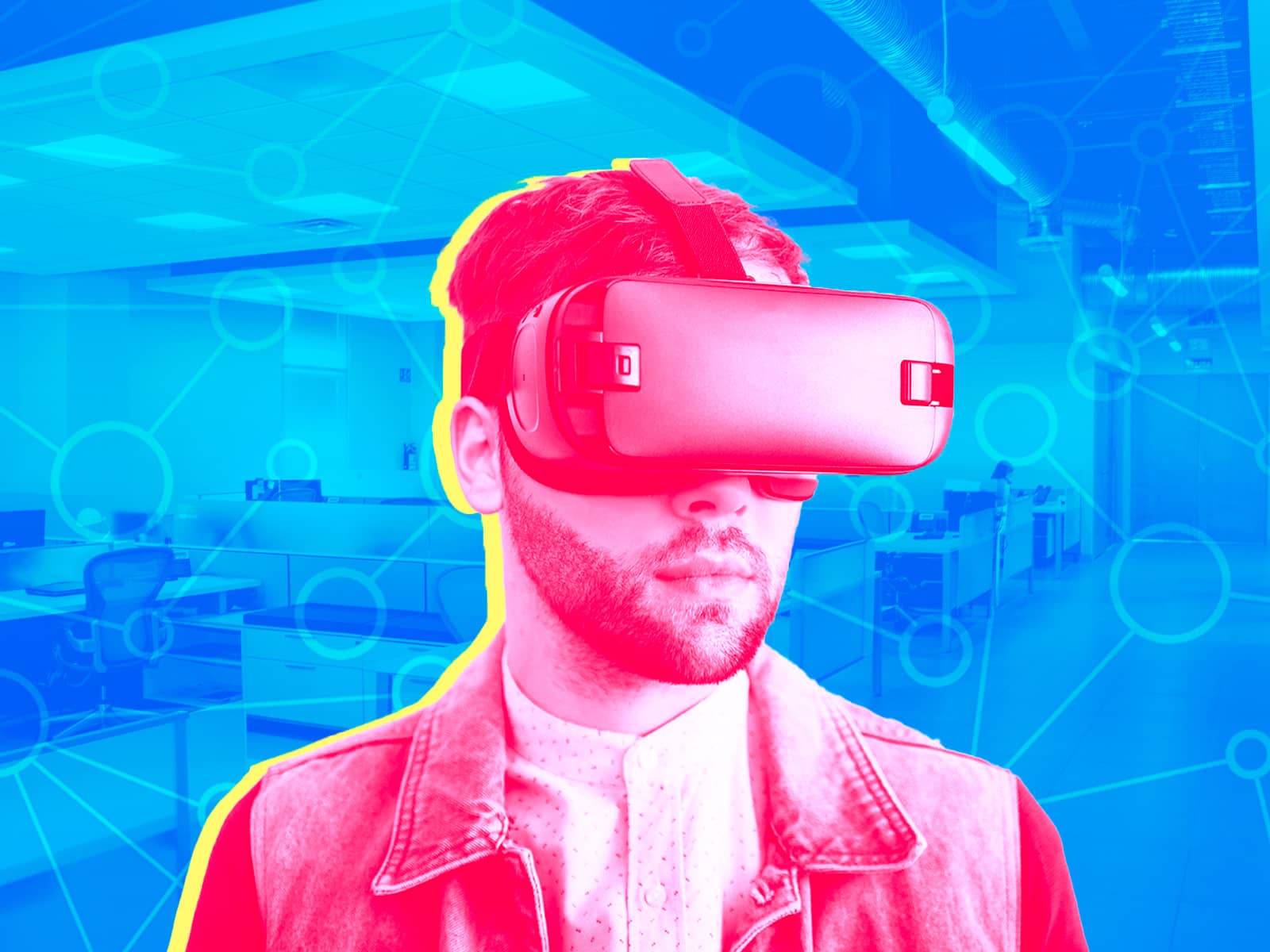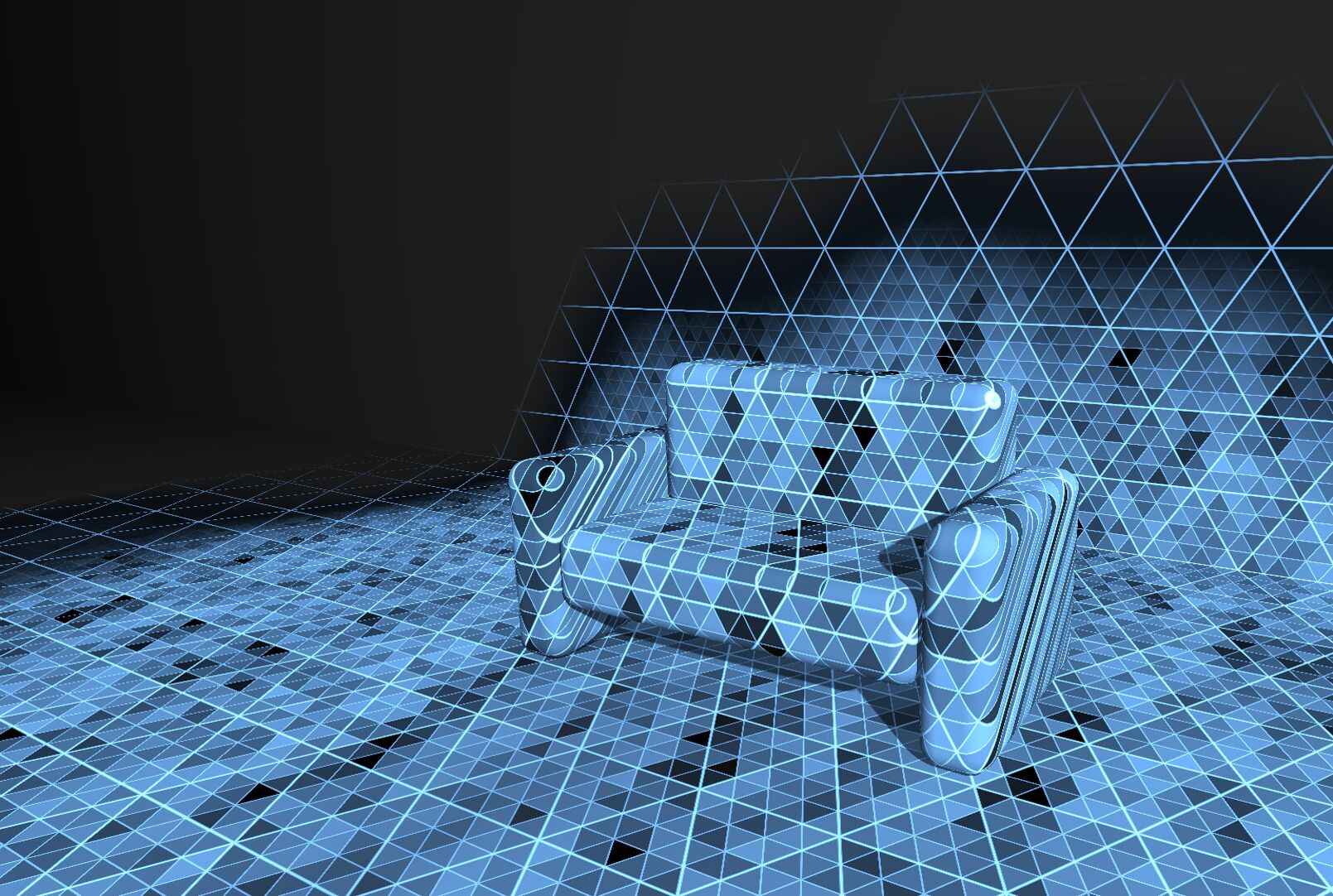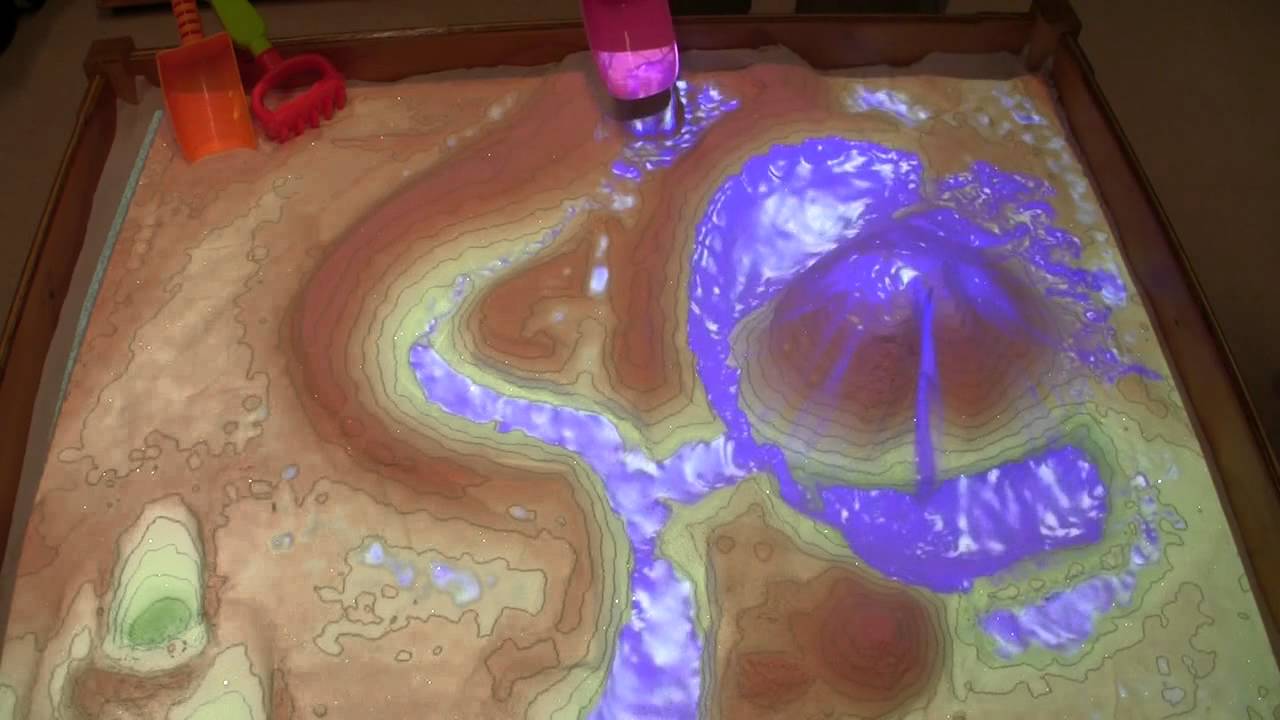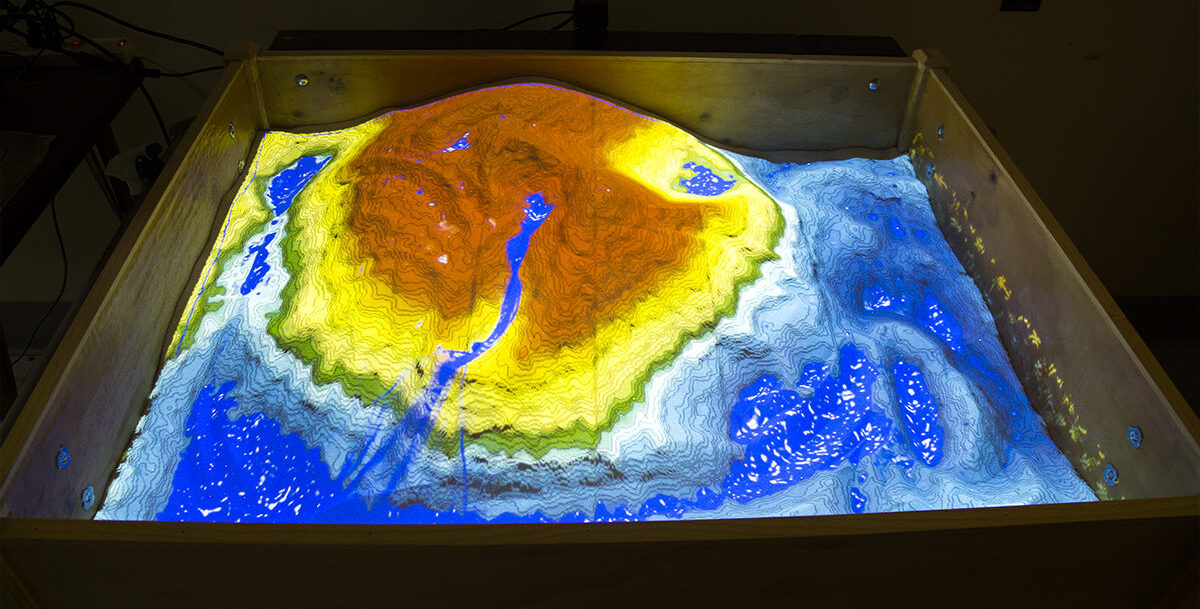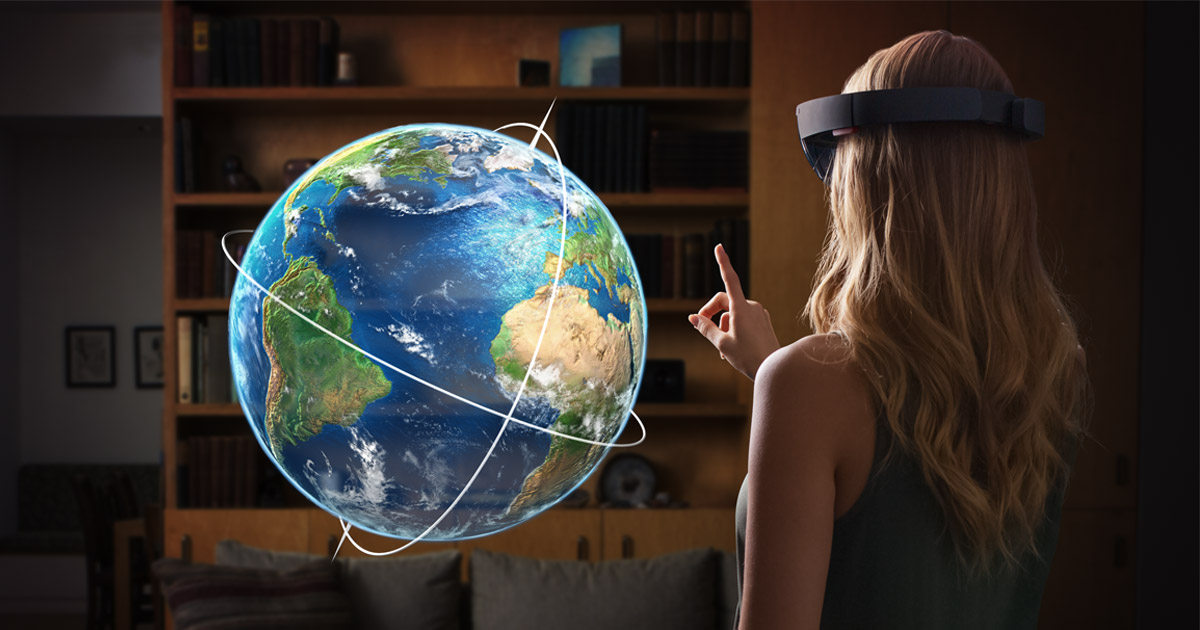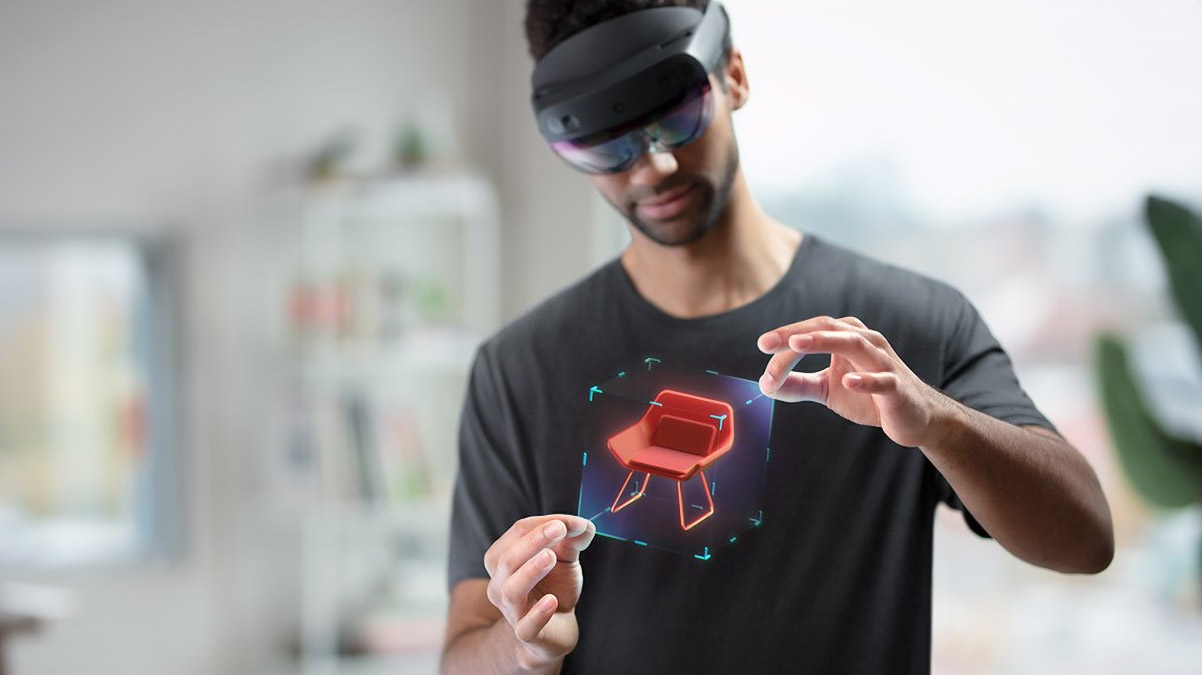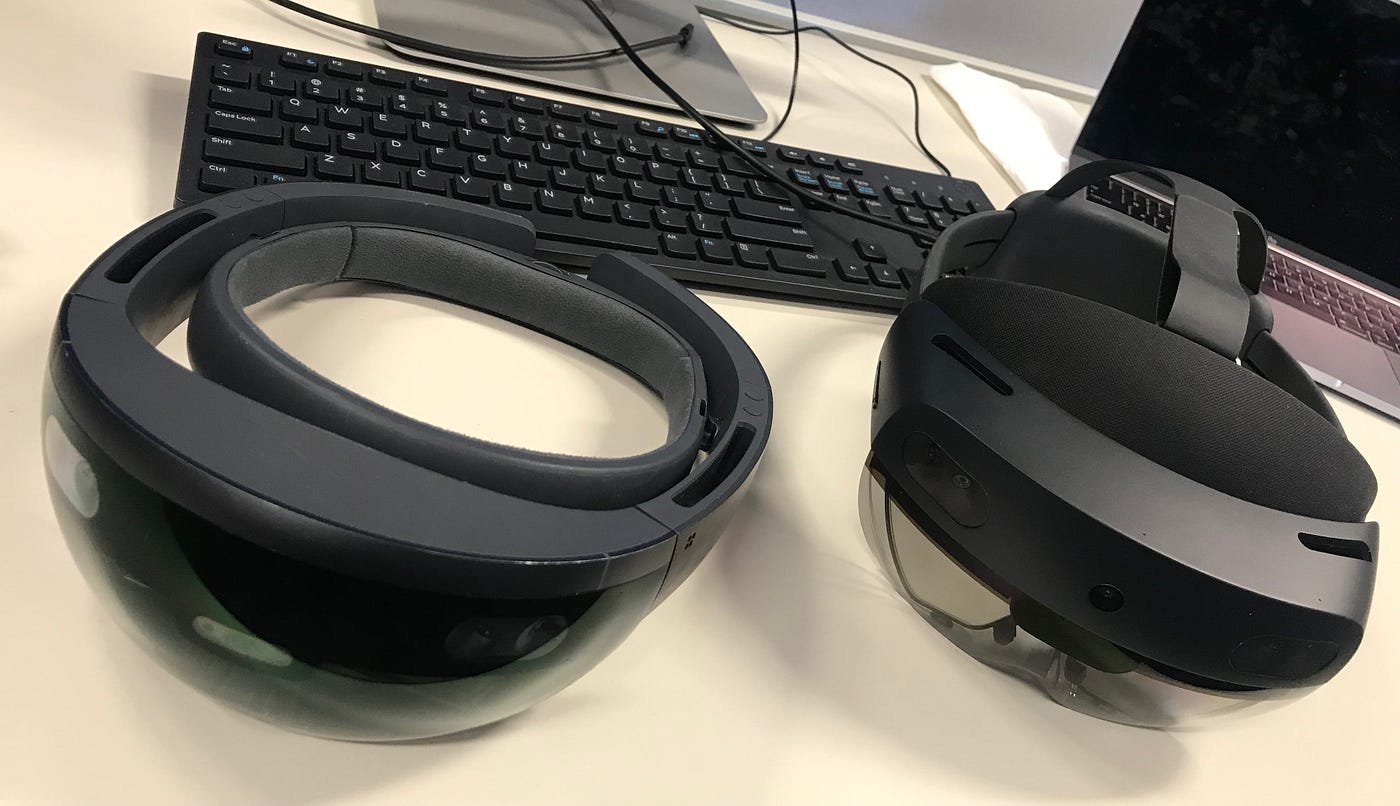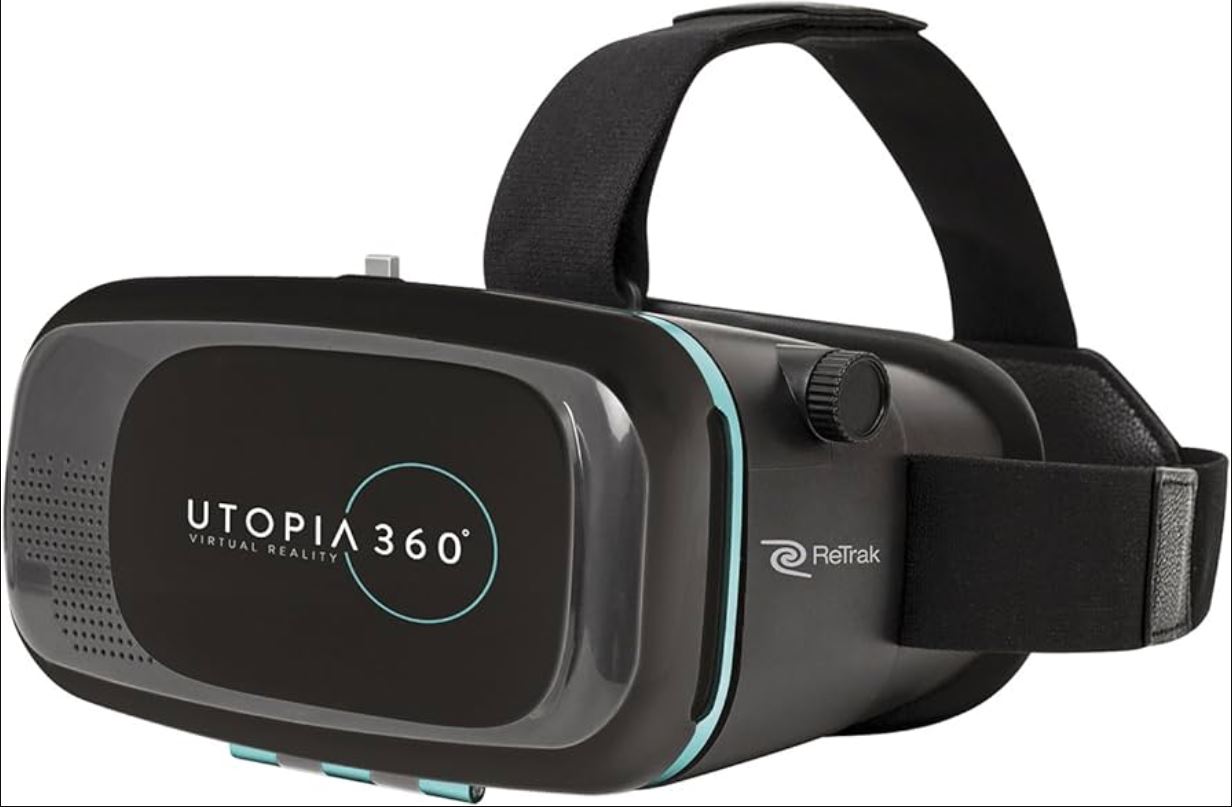Introduction
Augmented reality (AR) is a rapidly evolving technology that blends the virtual world with the real world, creating an immersive and interactive experience for users. It overlays digital information, such as images, videos, and 3D models, onto the user’s view of the physical environment. While AR has gained significant popularity in recent years, there are various components and elements that contribute to its functionality.
One vital component in augmented reality is the mesh. The mesh serves as the foundation for AR applications, enabling the accurate placement and interaction of virtual objects in the real world. Understanding the role of the mesh and how it is created is essential for comprehending the capabilities and limitations of augmented reality technology.
This article will delve into the concept of augmented reality and discuss the crucial role of the mesh. We will explore how the mesh is created, its advantages and limitations, and provide real-world examples of how it is utilized in AR applications. By the end of this article, you will have a deeper understanding of the significance of the mesh in augmenting our reality.
What is Augmented Reality?
Augmented reality (AR) is a transformative technology that blends the virtual world with the real world, enhancing our perception of reality and providing a unique interactive experience. Unlike virtual reality, which creates a completely immersive digital environment, AR overlays digital content onto our physical environment, seamlessly integrating virtual elements into our real-world surroundings.
The goal of augmented reality is to enhance our perception and interaction with the world by supplementing it with digital information. AR can be experienced through various devices, such as smartphones, tablets, smart glasses, or AR headsets. By using the devices’ cameras and sensors, AR applications detect the user’s surroundings and augment them with virtual images, videos, or 3D models.
One of the key features of augmented reality is its ability to provide real-time information and context that can aid in everyday activities. Imagine being able to see step-by-step instructions for assembling furniture, a virtual tour guide providing historical information about landmarks, or virtual markers showing the location of specific objects in a warehouse. AR has the potential to revolutionize industries such as education, healthcare, gaming, and manufacturing.
Augmented reality has gained significant traction in recent years, with major tech companies investing in AR development and introducing AR-enabled devices. The technology has also become popular in the consumer market, with AR games, social media filters, and shopping experiences becoming increasingly prevalent.
Furthermore, augmented reality has the potential to revolutionize how we interact with digital content and the physical world. By seamlessly integrating virtual elements into our reality, AR blurs the boundaries between the physical and digital realms, opening up endless possibilities for innovation and creativity.
In the following sections, we will explore one of the essential components of augmented reality: the mesh. We will dive into its definition, functionality, and how it contributes to creating the immersive AR experiences we know today.
What is the Mesh in Augmented Reality?
In the context of augmented reality, the mesh refers to a three-dimensional digital representation of the user’s physical environment. It is a crucial component that enables accurate placement and interaction of virtual objects within the real world.
The mesh is essentially a detailed map or model of the user’s surroundings, created by capturing and analyzing various data points. This data includes depth information, captured through sensors or cameras, which allows the device to understand the dimensions and contours of the environment. The mesh also takes into account other elements, such as surface textures, lighting conditions, and object positions.
By utilizing the mesh, AR applications can accurately anchor virtual objects within the user’s physical space. This means that virtual objects can appear to be fixed in a specific location, even as the user moves around. For example, a virtual sculpture can be placed on a real tabletop, and it will remain in the same position relative to the table, regardless of how the user views it from different angles.
The mesh also enables realistic occlusion, which means that virtual objects can be hidden or blocked by real-world objects. This creates a more immersive experience by making virtual objects interact with the user’s surroundings. For instance, a virtual character can appear to walk behind a real piece of furniture, enhancing the perception of depth and realism.
Furthermore, the mesh plays a vital role in enabling accurate tracking and interaction with virtual objects. By having a detailed understanding of the environment, AR devices can accurately detect and interpret user gestures and movements. This allows users to manipulate and interact with virtual objects using natural gestures, such as touching, gesturing, or even using hand controllers.
The creation and maintenance of the mesh are crucial for real-time augmented reality experiences. As the user moves around, the mesh needs to be constantly updated and adjusted to reflect changes in the environment. This ensures that virtual objects remain accurately placed and anchored within the user’s surroundings.
Next, we will explore in more detail how the mesh is created in augmented reality applications and the advantages it provides in enhancing the AR experience.
The Role of the Mesh in Augmented Reality
The mesh plays a critical role in the functionality and effectiveness of augmented reality applications. It serves as the foundation that anchors virtual objects within the user’s physical environment, enabling a seamless integration of digital and real-world elements.
One of the primary roles of the mesh is to provide accurate tracking and mapping of the user’s surroundings. By capturing and analyzing depth information, surface textures, and object positions, the mesh creates a detailed representation of the environment. This allows AR devices to understand the user’s physical space and accurately position virtual objects within it.
Accurate placement of virtual objects is essential for creating realistic and immersive AR experiences. The mesh ensures that virtual objects appear to exist within the user’s real-world environment, even as the user moves around. This stability and consistency in the placement of virtual objects contribute to a more seamless and believable augmented reality experience.
Moreover, the mesh enables realistic occlusion, which enhances the perception of depth and realism in augmented reality. By recognizing the surfaces and objects in the environment, virtual objects can appear to interact with the physical world. For example, a virtual character can walk behind a real object, or virtual furniture can seamlessly blend with the user’s existing surroundings.
In addition to positioning and occlusion, the mesh also enables accurate tracking and interaction with virtual objects. By understanding the user’s physical space, AR devices can interpret user gestures and movements. This allows for intuitive and natural interactions with virtual objects, enhancing the user experience and increasing immersion.
Furthermore, the mesh contributes to the overall performance and stability of augmented reality applications. By constantly updating and adjusting the mesh as the user moves, virtual objects can remain accurately anchored within the environment. This ensures that the virtual objects maintain their position relative to the user and their surroundings, creating a consistent and reliable AR experience.
Overall, the mesh plays a vital role in augmenting our reality by providing a foundation for accurate placement, occlusion, tracking, and interaction of virtual objects. Its contribution to the seamless integration of digital content within the real-world environment is essential for creating immersive and engaging augmented reality experiences.
How is the Mesh Created?
The creation of the mesh in augmented reality involves capturing and processing various data to generate a detailed digital representation of the user’s physical environment. This process requires sophisticated algorithms and sensors to ensure accuracy and reliability.
One of the primary methods used to create the mesh is depth sensing. This involves using depth sensors, such as Time-of-Flight (ToF) cameras or structured light sensors, to capture the distance between the camera and different objects in the environment. This depth information provides crucial data points for building an accurate representation of the physical space.
In addition to depth sensing, the mesh creation process may also involve color and texture mapping. By capturing images or videos of the environment, the mesh can incorporate detailed surface textures and colors into its digital representation. This enhances the realism of the virtual objects that will be placed within the augmented reality experience.
The captured data, including depth information, surface textures, and object positions, is then processed using advanced algorithms. These algorithms analyze the data and generate a three-dimensional mesh that accurately represents the user’s surroundings. The mesh consists of interconnected vertices, edges, and faces that form a detailed and precise digital model of the environment.
The accuracy and level of detail of the mesh can vary depending on the capabilities of the AR device or application. High-end AR devices may use advanced depth sensing technologies and multiple sensors to capture more detailed and precise data, resulting in a more accurate and realistic mesh.
Once the mesh is created, it needs to be continuously updated and refined as the user moves within the environment. This ensures that the virtual objects remain accurately positioned and anchored to the physical space. Real-time tracking and mapping algorithms are utilized to update the mesh based on the user’s movements and changes in the surroundings.
The creation of the mesh is a complex process that requires a combination of hardware and software capabilities. It is a fundamental step in the augmented reality pipeline that enables the accurate placement and interaction of virtual objects within the real world, contributing to the immersive and realistic AR experiences we enjoy.
Advantages of Using the Mesh in Augmented Reality
The utilization of the mesh in augmented reality applications offers several advantages that enhance the overall AR experience. These advantages contribute to the seamless integration of virtual objects with the user’s physical environment, improving immersion, accuracy, and realism.
One significant advantage of using the mesh is accurate object placement. By anchoring virtual objects to the real-world environment through the mesh, augmented reality applications can ensure that the objects appear to be physically present in specific locations. This accuracy allows for more realistic interactions with virtual objects and enables applications such as virtual furniture placement or virtual art exhibitions.
Realistic occlusion is another advantage of utilizing the mesh. By recognizing the geometry of the environment, including objects and surfaces, virtual objects can be occluded or hidden by real-world entities. This occlusion effect creates a more immersive experience, as virtual objects can interact with and be influenced by the user’s physical surroundings. For example, a virtual character can appear to walk behind a real object, adding depth and realism to the augmented reality experience.
The mesh also enables accurate tracking and interaction with virtual objects. By understanding the dimensions and contours of the environment, AR devices can interpret and respond to user gestures and movements, providing a more natural and intuitive user experience. Users can manipulate virtual objects with precision, making augmented reality applications more engaging and interactive.
Furthermore, the mesh contributes to the overall stability and consistency of augmented reality experiences. By continuously updating and adjusting the mesh as the user moves, virtual objects remain accurately anchored within the user’s surroundings. This stability ensures that virtual objects maintain their position and orientation relative to the user, even if the user changes their perspective or moves within the space.
Another advantage of the mesh is its scalability and adaptability. As AR technology continues to advance, the mesh can be continually refined and improved, allowing for more detailed and accurate representations of the environment. This scalability enables the creation of more immersive and realistic augmented reality experiences over time.
Overall, the use of the mesh in augmented reality applications provides several advantages, including accurate object placement, realistic occlusion, enhanced interaction, stability, and scalability. These advantages contribute to creating more immersive and engaging AR experiences, further blurring the lines between the virtual and physical worlds.
Limitations of the Mesh in Augmented Reality
While the mesh is a crucial component in augmented reality, it also has its limitations that impact the overall AR experience. Understanding these limitations is essential for developers and users to manage their expectations and work towards further advancements in the technology.
One of the main limitations of using the mesh is its dependency on accurate data capture and processing. To create an accurate and detailed mesh, the AR device must capture precise depth information, surface textures, and object positions. Any inaccuracies or limitations in these data points can result in a less accurate and reliable representation of the environment.
Another limitation is the computational resources required for real-time mesh creation and updating. Creating and maintaining a detailed mesh in real-time can be computationally intensive, which may strain the resources of mobile devices or lower-end AR hardware. This can impact the overall performance and responsiveness of augmented reality applications.
Furthermore, the mesh can have difficulty adapting to dynamic environments. Changes in lighting conditions, moving objects, or dynamic elements in the environment can challenge the accuracy and stability of the mesh. This can result in virtual objects appearing misaligned or unrealistic within the user’s physical space.
Additionally, the mesh can encounter challenges in recognizing and filtering out certain types of objects or surfaces. Transparent or reflective objects, for example, can be more difficult to capture accurately, leading to issues with occlusion or depth perception. Similarly, surfaces with repetitive patterns or lacking distinctive features may pose challenges for the mesh to differentiate and accurately map.
Moreover, the quality and accuracy of the mesh can vary depending on the capabilities of the AR device or application. Higher-end devices with advanced depth sensors and algorithms can produce more detailed and precise meshes, while lower-end devices may generate meshes with less detail and accuracy.
Lastly, the mesh creation process may have limitations in certain environments. Outdoor environments with large distances or open areas may present challenges in accurate depth sensing and mapping. Similarly, environments with limited visual or sensory information, such as empty rooms or featureless spaces, can hinder the creation of an accurate and detailed mesh.
Despite these limitations, ongoing advancements in technology and research are continuously improving the capabilities and performance of the mesh in augmented reality. As these limitations are addressed and overcome, we can expect even more immersive and realistic AR experiences in the future.
Examples of Mesh Applications in Augmented Reality
The use of the mesh in augmented reality has paved the way for a wide range of applications that enhance our interaction with the real world. Let’s explore some examples of how the mesh is utilized in various AR experiences.
One popular application of the mesh in augmented reality is furniture placement. With the help of the mesh, users can virtually place furniture items in their physical space before making a purchase. By overlaying virtual furniture onto the mesh, users can visualize how the furniture will look and fit in their room, allowing them to make more informed decisions.
Another example is in the field of interior design. By creating a mesh of the room, interior designers can virtually add and manipulate various design elements, such as wall colors, flooring, lighting fixtures, and artwork. This allows clients to visualize different design options and make decisions based on their preferences, resulting in a more efficient and accurate design process.
The mesh is also used in architectural visualization. By creating a detailed mesh of a building or structure, architects and constructors can overlay digital models onto the mesh to visualize proposed changes or additions. This enables stakeholders to have a better understanding of the project and make informed decisions early in the design process.
In the entertainment industry, the mesh plays a significant role in creating immersive AR gaming experiences. By mapping the user’s physical environment, the mesh allows game developers to place virtual objects, characters, or interactive elements in the real world. This creates a more realistic and engaging gameplay experience, blurring the lines between the virtual and physical realms.
Furthermore, the mesh is used in healthcare applications, such as surgical planning and training. By creating a mesh of the patient’s anatomy, surgeons can overlay virtual representations onto the mesh, allowing them to visualize and plan surgical procedures more accurately. This helps improve precision and reduces potential risks during surgeries.
Another innovative application of the mesh is in navigation and wayfinding. By overlaying digital maps and directional guidance onto the mesh representation of the environment, users can navigate through unfamiliar spaces more efficiently. This can be particularly useful in large venues like airports, shopping malls, or museums.
These are just a few examples of how the mesh is used in augmented reality applications. As technology continues to advance, we can expect to see the mesh being incorporated into various other fields, revolutionizing how we interact with our surroundings, and enhancing our overall AR experiences.
Conclusion
The mesh plays a vital role in augmenting our reality through augmented reality technology. By creating a detailed digital representation of the user’s physical environment, the mesh enables accurate placement, occlusion, tracking, and interaction of virtual objects within the real world.
We explored the concept of augmented reality and learned how it blends virtual and real-world elements to create immersive experiences. We then delved into the significance of the mesh in augmented reality, understanding how it serves as the foundation for accurate object placement, occlusion, and interaction.
The creation of the mesh involves capturing and processing data such as depth information, surface textures, and object positions. This data is then transformed into a three-dimensional model of the environment, allowing virtual objects to be seamlessly integrated into the real-world context.
Advantages of using the mesh in augmented reality include accurate object placement, realistic occlusion, enhanced interaction, stability, and scalability. These benefits contribute to creating more immersive and engaging AR experiences.
However, it is important to consider the limitations of the mesh, such as its dependency on accurate data capture and processing, challenges in dynamic environments, and variations in quality depending on the device or application used.
The mesh finds application in various industries, including furniture placement, interior design, architectural visualization, gaming, healthcare, and navigation. These examples highlight the versatility and potential of the mesh in enhancing our interaction with the real world.
In conclusion, the mesh is a critical component in augmented reality that enables the seamless integration of virtual objects into our physical environment. As technology advances and these limitations are addressed, we can look forward to more advanced and immersive augmented reality experiences in the future.







